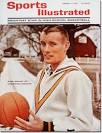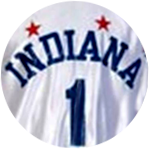
For baby boomers of a certain vintage, Mount’s name remains magical.
He became the first athlete from a team sport to be featured on the cover of Sports Illustrated, the biggest thing that could happen to an athlete in that era before the internet and ESPN. I remember being in grade school and sprinting down to the library after word got out that the Mount issue had arrived. Frank Deford wrote the story, which was as much a slice-of-life look at a small-town Midwestern sports star than a profile of Mount.
Mount, who was an obvious choice for Mr. Basketball in 1966, is easily one of the best shooters in the game’s history. His jump shot was a work of art for its simplicity and consistency. Fans who watched him at Purdue remember those drives into the deep right corner and high-arching shots over the top of the backboard while he faded out of bounds. He came from the era when it was OK for a great shooter to fire up shots from 30 feet or more although the three-point line didn’t exist yet.
One of my (few) claims to fame is that I uncovered how many points he would have scored with a three-pointer during his 61-point game against Iowa in 1970. Back in the Eighties, I was writing a column on the three-point line when it was introduced in the Big Ten and did some research. Bruce Weber, Purdue’s assistant coach at the time, dug out an old film of one of Mount’s games against Ohio University. I watched the first half and counted seven shots that would have been three-pointers today. Troy Lewis, an underclassman at Purdue at the time and a notable shooter in his own right, was studying in the players lounge while I watched the film – until I interrupted him, at least. He was howling at Mount’s shooting range and accuracy, but also his casual defense, which was typical of the era. “He could never play for Coach Keady!’ Lewis said.
Hard to say if that’s true or not.
With help from Bob Goldring, an assistant in the sports information department, I found the shot chart from the game against Iowa in a box in a storage closet underneath a stairwell in Mackey Arena. We counted 13 shots that probably would have been three-pointers, meaning Mount would have scored 74 points that day. I later passed along that detail to a Louisville sports columnist, Rick Bozich, who passed it on to Sports Illustrated, which published it. From that point on, it’s been an oft-repeated stat.
Mount’s professional career didn’t go as planned. He played two seasons for the Pacers, but was a poor fit for coach Slick Leonard. His lack of comfort is obvious by his shooting percentages: just 31 percent from the three-point line and 37 percent from the field over those seasons. He then started on the Kentucky team that played against the Pacers in the ABA finals in 1973. Two seasons later he was having an outstanding season in Memphis but suffered a separated shoulder. He played in Utah as well. He retired in the Pacers training camp in 1976, before he had turned 30. He had a chance to come back and play for Houston in the ABA in 1979, but backed out at the last minute.
Mount doesn’t particularly like talking about his playing career, but he’ll do it if he knows you well enough. I was happy that he not only agreed to talk with me but provided enough material for two episodes. I’ve talked with him many times on the telephone since then and we tend to have good and long conversations. He’s bitter about some of his experiences in basketball, understandably so in some cases, but he’s a down-to-earth guy who loves to talk basketball and teach shooting.
First aired 2009
Tagged with: Indiana Mr. Basketball 1966, Indiana Pacers, Lebanon High School, Memphis Sounds, Purdue basketball, Rick Mount, Sports Illustrated cover
 Indiana Mr. Basketball
Indiana Mr. Basketball Pacers
Pacers Purdue basketball
Purdue basketball